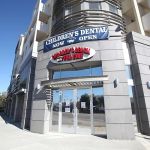- 1-Recognizing-the-Early-Warning-Signs-of-Oral-Cancer
- 2-Common-Oral-Cancer-Symptoms-to-Watch-For
- 3-Risk-Factors-That-Increase-Oral-Cancer-Chances
- 4-Real-Stories-Highlight-the-Importance-of-Early-Detection
- 5-Professional-Guidance-on-When-to-See-a-Dentist-or-Specialist
1. Recognizing the Early Warning Signs of Oral Cancer
Oral cancer can develop in any part of the mouth or throat, making early detection critical to successful treatment. Knowing how to identify oral cancer symptoms is the first step toward timely intervention. Early signs often present subtly and may be mistaken for less serious conditions, so awareness is essential.
1.1 Persistent mouth sores or ulcers
One of the hallmark early symptoms is a sore or ulcer in the mouth that does not heal within two weeks. These sores can appear on the tongue, gums, lips, or inside the cheeks and might be painless initially, causing many to overlook them.
1.2 Unexplained lumps or thickened areas
Feelings of lumps, rough patches, or thickened tissue inside the mouth or on the lips can indicate abnormal cell growth. Such changes should prompt a dental evaluation, especially if they persist or increase in size.
2. Common Oral Cancer Symptoms to Watch For
Beyond early warning signs, other symptoms may emerge as oral cancer progresses. It is vital to pay attention to these to seek medical advice promptly.
2.1 Difficulty chewing or swallowing
Persistent pain or difficulty when chewing, swallowing, or moving the jaw may signal deeper tissue involvement by cancerous growths.
2.2 Numbness or loss of sensation
Numbness in the tongue, lips, or other mouth areas can indicate nerve involvement, often associated with advancing disease.
2.3 Unexplained bleeding or persistent bad breath
Bleeding that cannot be explained by trauma or brushing, and bad breath that does not resolve with oral hygiene efforts, may be signs of underlying pathology.
3. Risk Factors That Increase Oral Cancer Chances
Understanding who is at greater risk helps in vigilance and early screening.
3.1 Tobacco and alcohol use
The combined use of tobacco products and heavy alcohol consumption significantly raises oral cancer risk. Smoking cigars, cigarettes, or using smokeless tobacco is particularly harmful.
3.2 Human papillomavirus (HPV) infection
HPV, especially HPV-16, is increasingly linked to oropharyngeal cancers. Safe sexual practices and HPV vaccination can reduce this risk.
3.3 Age and sun exposure
Oral cancer incidence rises with age, particularly over 40. Excessive sun exposure to lips can also increase risk of lip cancer.
4. Real Stories Highlight the Importance of Early Detection
Linda, a 55-year-old woman from New York, noticed a persistent patch on her tongue but delayed seeing a doctor. By the time she was diagnosed with oral cancer, it had progressed, requiring extensive treatment. She now advocates for regular dental checkups and early attention to symptoms.
Conversely, Robert, diagnosed at an early stage thanks to his dentist’s routine screening, underwent successful treatment with minimal complications. His story underscores how awareness and professional care can change outcomes.
5. Professional Guidance on When to See a Dentist or Specialist
If you suspect any of the symptoms described or belong to a high-risk group, prompt dental evaluation is essential. Dentists are trained to perform oral cancer screenings and can refer you for biopsy or specialist care if needed.
5.1 Routine oral cancer screenings during dental visits
Most dental offices in the US incorporate oral cancer checks as part of routine exams. These screenings are painless and can detect suspicious lesions early.
5.2 Using technology for early detection
Advanced tools like fluorescence visualization and brush biopsy complement traditional exams, increasing the accuracy of early diagnosis.
For trusted guidance, professional screening, and treatment options tailored to your needs, Dentistry Toothtruth offers comprehensive resources connecting you with experienced dental providers.







 Woodlawn Dental Gallery4.0 (537 review)
Woodlawn Dental Gallery4.0 (537 review) Children's Dental FunZone - Pediatric Dentist & Orthodontist - West LA4.0 (1410 review)
Children's Dental FunZone - Pediatric Dentist & Orthodontist - West LA4.0 (1410 review) Bright Smile Family Dentistry5.0 (47 review)
Bright Smile Family Dentistry5.0 (47 review) Dr. Michael Harper5.0 (3 review)
Dr. Michael Harper5.0 (3 review) Dr. April Bridges-Poquis, DDS5.0 (2 review)
Dr. April Bridges-Poquis, DDS5.0 (2 review) Aspen Dental - Lees Summit, MO4.0 (592 review)
Aspen Dental - Lees Summit, MO4.0 (592 review) The Importance of Oral Health Education During Pregnancy for a Healthy Pregnancy
The Importance of Oral Health Education During Pregnancy for a Healthy Pregnancy Best Tips for Brushing Your Teeth Properly for Healthy Gums: Essential Techniques for Oral Health
Best Tips for Brushing Your Teeth Properly for Healthy Gums: Essential Techniques for Oral Health Why Skipping Dental Checkups Can Lead to Bigger Oral Health Problems
Why Skipping Dental Checkups Can Lead to Bigger Oral Health Problems Advantages of Porcelain Dental Restorations
Advantages of Porcelain Dental Restorations How Can Diabetes Cause Tooth and Gum Problems? Preventing and Managing Oral Health Issues
How Can Diabetes Cause Tooth and Gum Problems? Preventing and Managing Oral Health Issues Healthy Habits for Promoting Good Oral Health and Hygiene: Tips for a Healthy Smile
Healthy Habits for Promoting Good Oral Health and Hygiene: Tips for a Healthy Smile